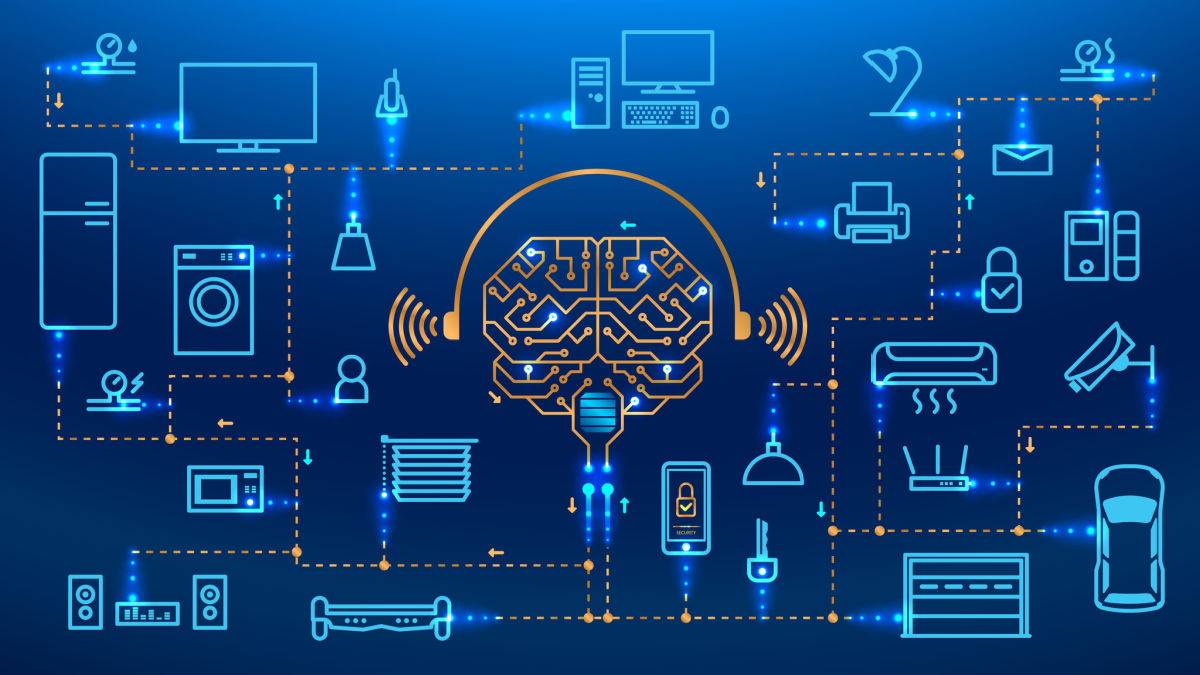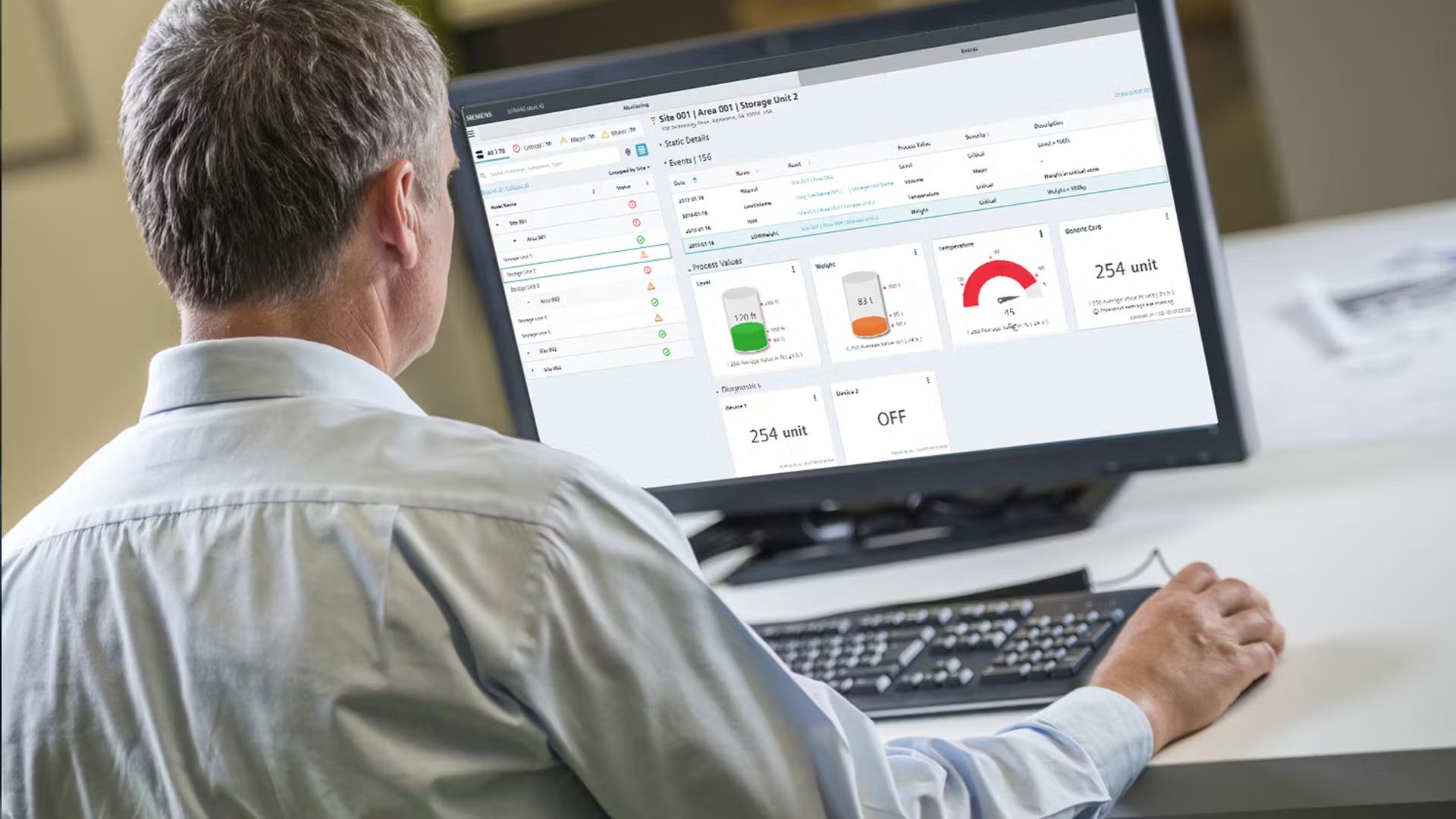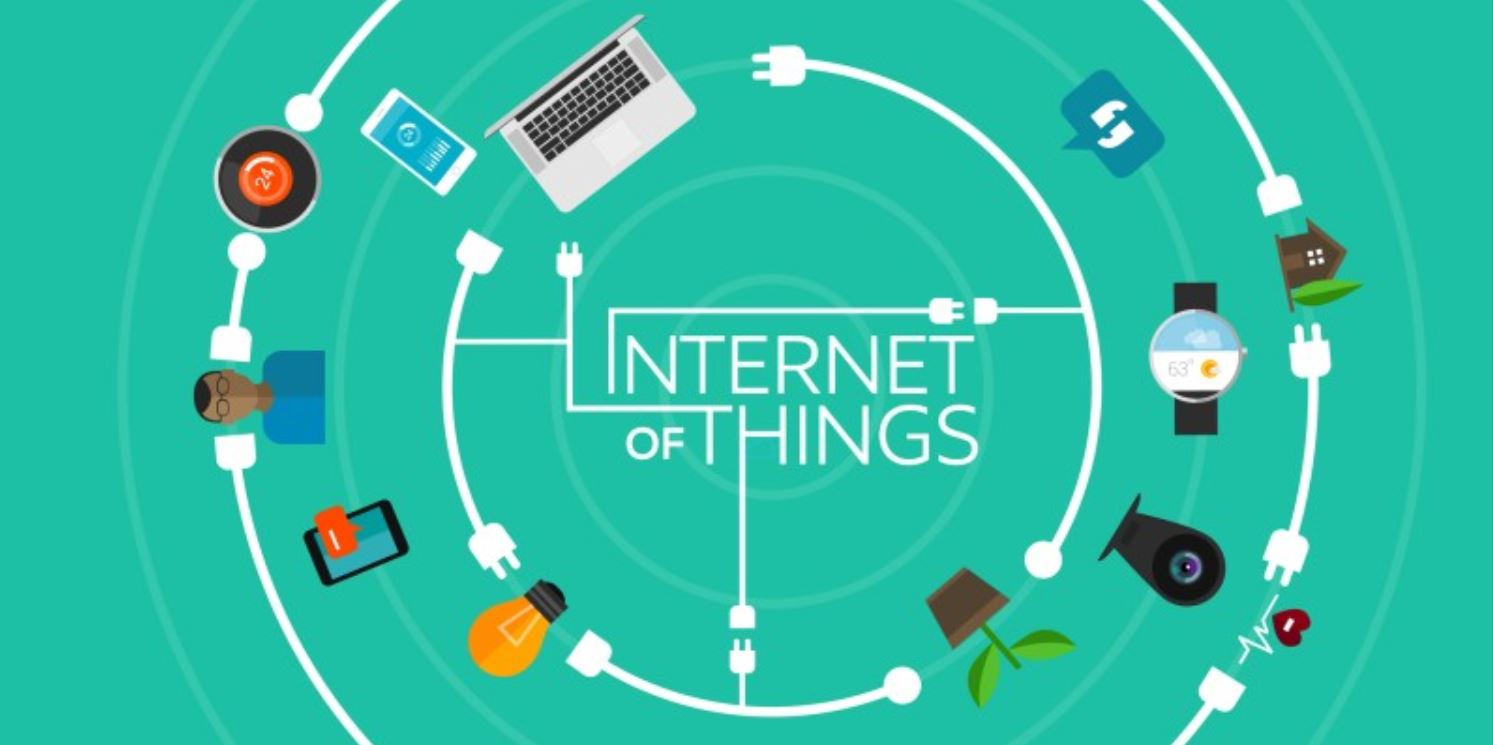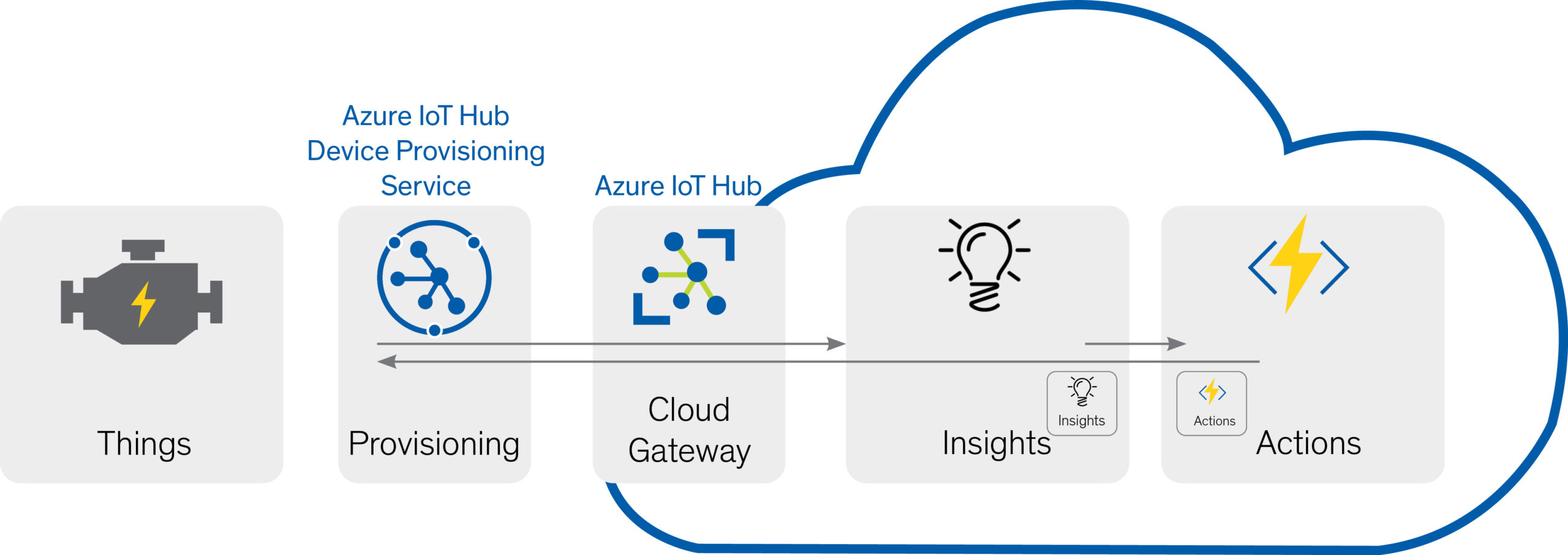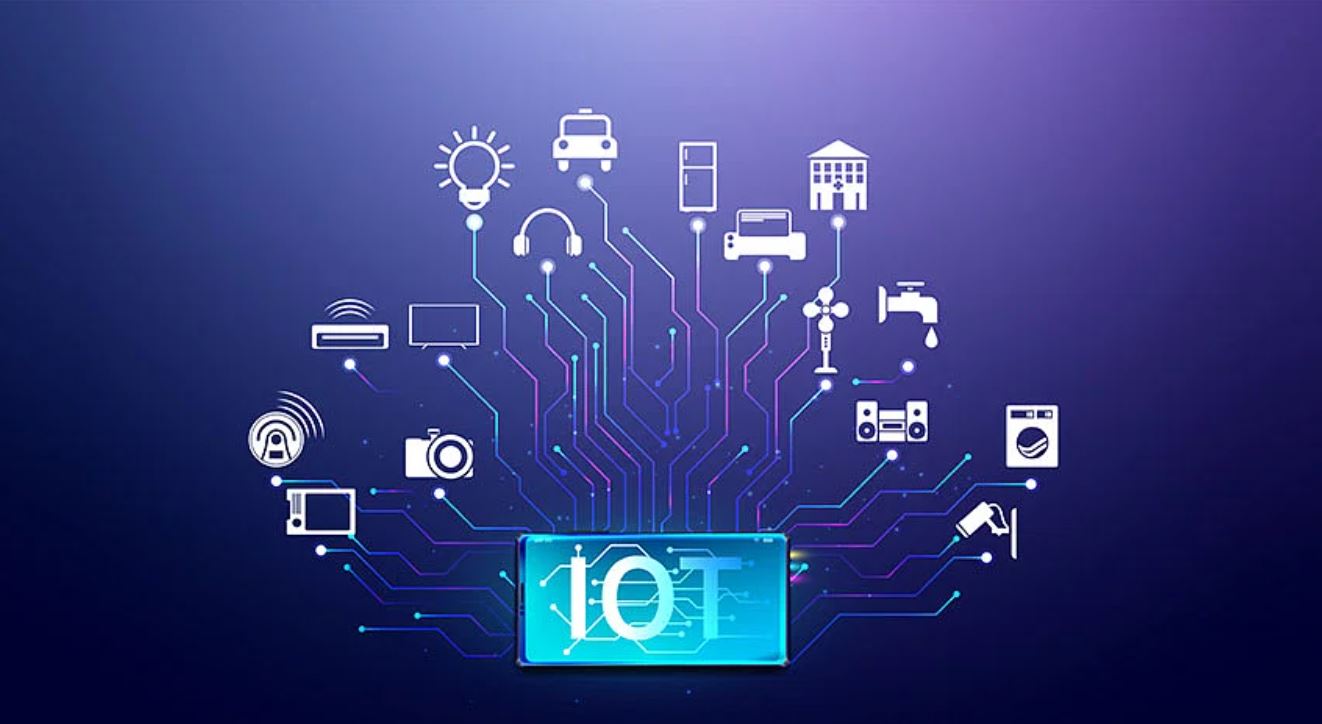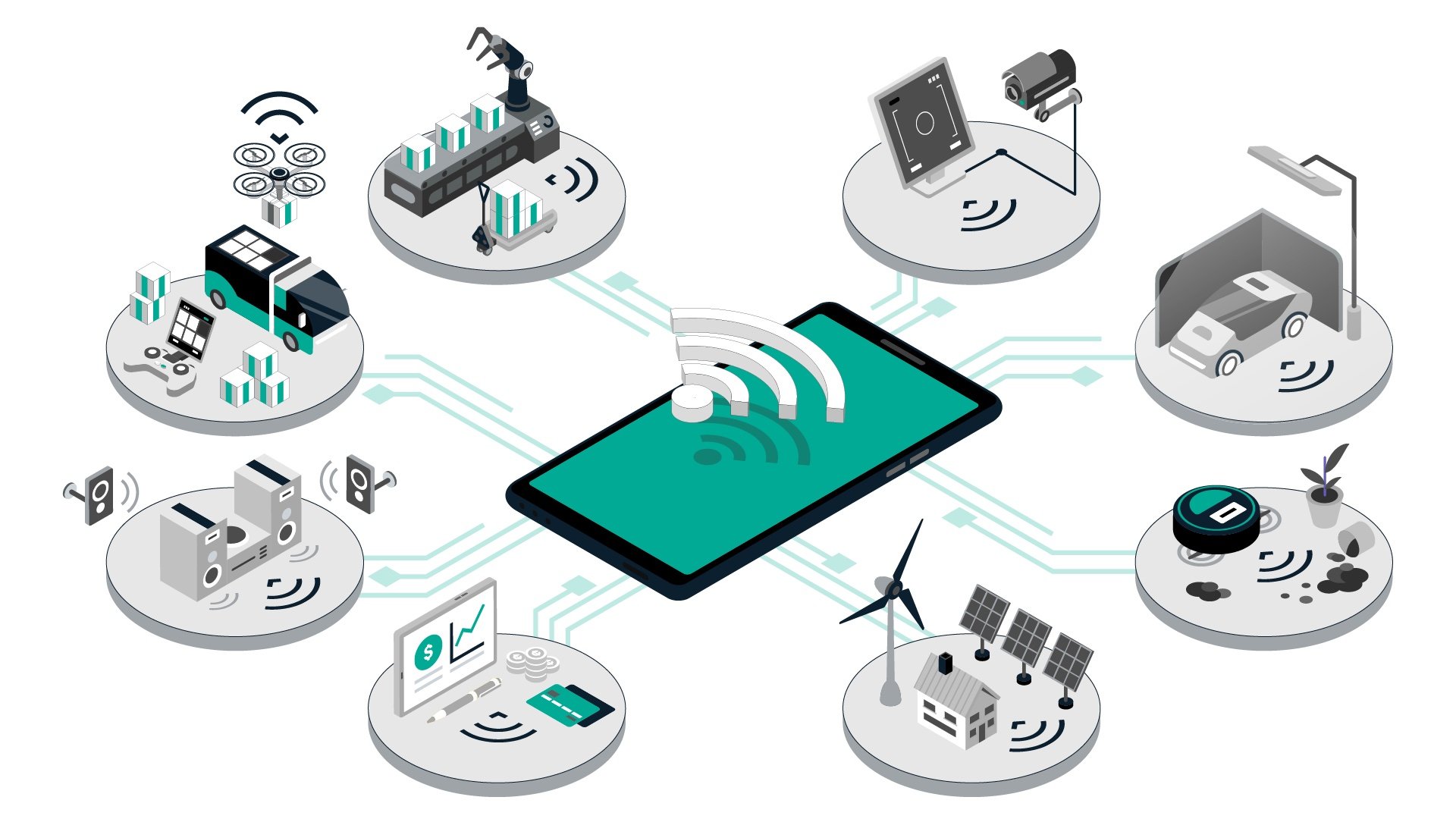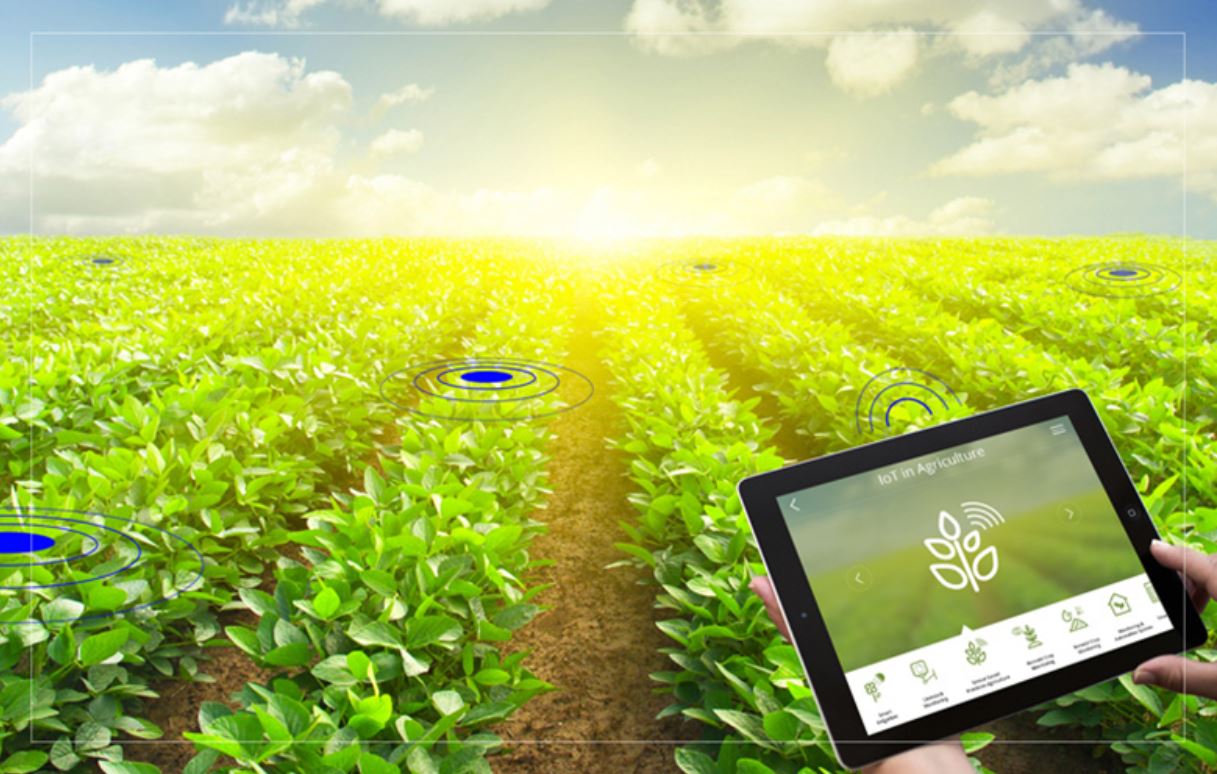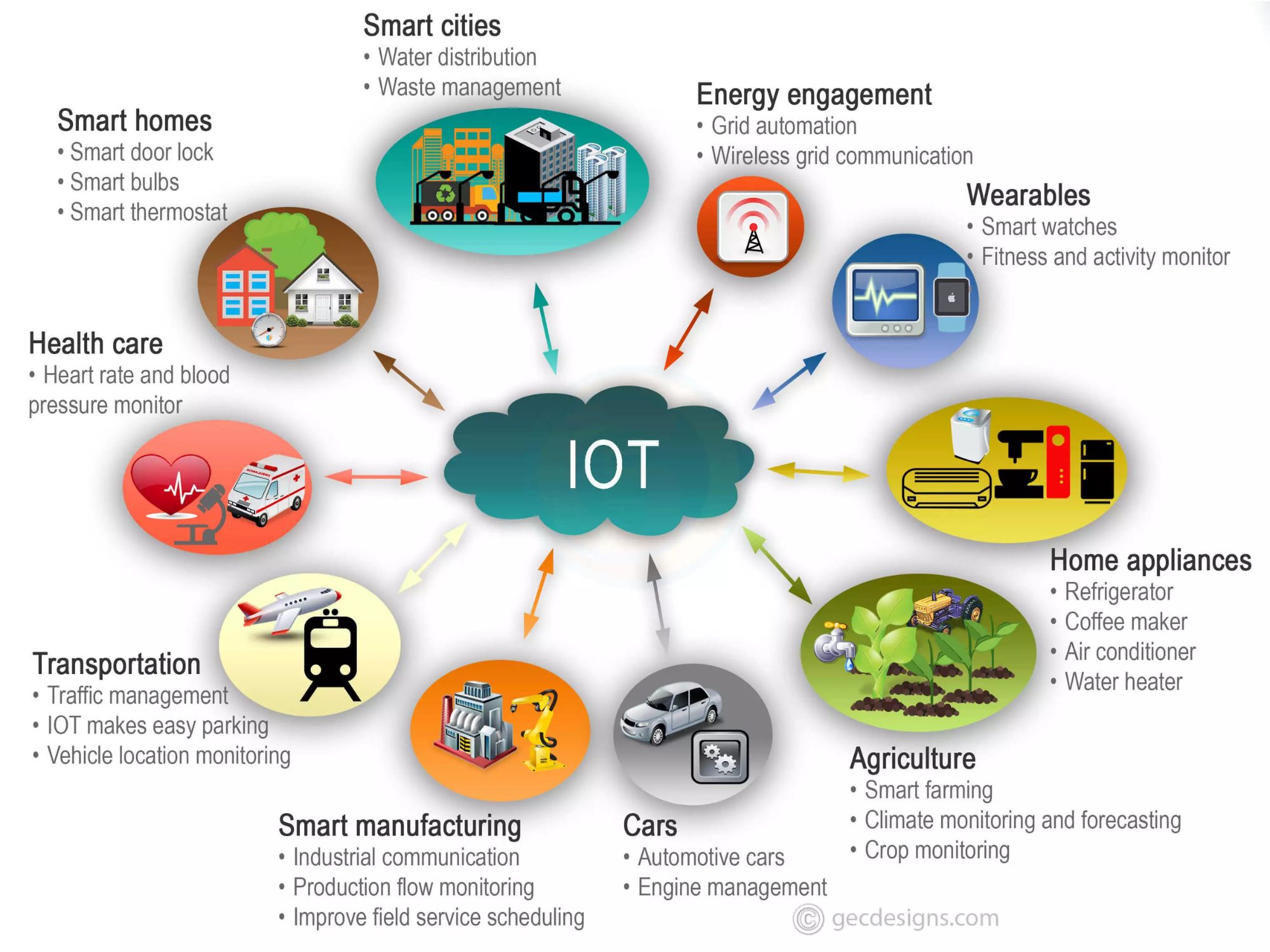Introduction
The Internet of Things (IoT) has revolutionized the way we interact with technology. It encompasses a wide range of devices, from smart thermostats and wearable fitness trackers to industrial sensors and autonomous vehicles. These IoT devices are connected to the internet, allowing them to communicate with each other and with users, enabling automation, data collection, and remote control.
In today’s digital world, the adoption of IoT devices has skyrocketed across industries, from healthcare and manufacturing to agriculture and transportation. However, as the number of IoT devices continues to grow, the need for effective monitoring and management becomes crucial.
Proper monitoring of IoT devices is essential to ensure their seamless operation, reliability, and security. It involves tracking and analyzing device performance, detecting anomalies, and taking corrective actions when needed. By monitoring IoT devices, organizations can gain valuable insights into their functionality, identify potential issues proactively, and optimize their performance.
Monitoring IoT devices provides various benefits, including improved operational efficiency, enhanced security, reduced downtime, and increased productivity. It allows businesses to identify and address problems in real-time, preventing potential disruptions and minimizing the impact on operations and customer satisfaction.
Additionally, the data collected through IoT device monitoring can be used for analysis and decision-making. Organizations can gain valuable insights into consumer behavior, identify trends, and make data-driven decisions to improve products, services, and processes.
However, monitoring IoT devices presents unique challenges due to the scale, diversity, and complexity of these devices. The sheer number of devices, their distributed nature, and the continuous data flow require robust tools and techniques to effectively monitor and manage them.
In the following sections, we will explore the different types of IoT devices, the importance of monitoring them, the challenges involved, and the tools and best practices for effective IoT device monitoring.
What are IoT devices?
IoT devices are physical objects embedded with sensors, software, and connectivity capabilities that enable them to connect and exchange data with other devices and systems through the internet. These devices can range from small consumer gadgets to large industrial equipment, each serving a specific purpose to enhance functionality and enable automation.
An IoT device can take many forms, including but not limited to:
- Wearable Devices: Smartwatches, fitness trackers, and other wearable gadgets that collect and transmit data about user activity, health, and location.
- Home Automation Devices: Smart thermostats, security systems, and smart appliances that allow users to control and monitor their homes remotely.
- Industrial Sensors: Devices used to collect data about various parameters like temperature, pressure, humidity, or presence in industrial settings to enable process optimization and predictive maintenance.
- Connected Cars: Automobiles equipped with sensors, GPS, and connectivity features that provide real-time information about traffic, location, and vehicle performance.
- Healthcare Devices: Medical devices such as heart rate monitors, glucose meters, or remote patient monitoring systems that enable healthcare professionals to track patients’ health remotely.
These are just a few examples of the diverse range of IoT devices available today. The common factor among them is their ability to connect to the internet and communicate with other devices or systems, either directly or through a gateway or hub.
The data collected by IoT devices is usually transmitted to cloud-based platforms or local servers, where it can be analyzed, processed, and used for various purposes, such as monitoring, automation, and decision-making.
IoT devices play a key role in enabling the concept of a “smart” world, where everything is interconnected, and data is constantly collected and utilized to improve efficiency, convenience, and productivity.
However, with the proliferation of IoT devices, ensuring their proper functioning, security, and performance becomes vital. Effective monitoring of these devices allows organizations to detect and address issues promptly, ensuring uninterrupted operation and maximizing the benefits of IoT technology.
Why monitoring IoT devices is important
Monitoring IoT devices is crucial for several reasons, ranging from ensuring their optimal performance to maintaining security and mitigating potential risks.
1. Performance Optimization: IoT devices collect and transmit vast amounts of data, and monitoring allows organizations to track the performance of these devices in real-time. By continually monitoring metrics like device status, connectivity, and data throughput, organizations can identify and resolve any performance issues promptly. This ensures that IoT devices operate at their peak efficiency, providing accurate and reliable data.
2. Predictive Maintenance: IoT device monitoring allows organizations to detect anomalies and patterns in device behavior. This enables the implementation of predictive maintenance strategies, where potential equipment failures can be identified in advance. By addressing maintenance needs before they escalate into critical failures, organizations can minimize downtime, reduce costs, and optimize the lifespan of IoT devices.
3. Security Enhancement: IoT devices are vulnerable to cyber threats, and monitoring is essential for ensuring their security. Monitoring can detect any unusual network traffic, unauthorized access attempts, or potential security breaches. By promptly identifying and responding to security incidents, organizations can safeguard the integrity and confidentiality of data collected by IoT devices.
4. Compliance and Regulations: Many industries, such as healthcare and finance, have strict compliance regulations regarding data privacy and security. Monitoring IoT devices helps organizations ensure compliance with these regulations. It allows them to track and audit device activity, maintain data integrity, and demonstrate adherence to industry standards and regulations.
5. Cost Optimization: By monitoring IoT devices, organizations can identify inefficient device usage, detect energy or resource wastage, and optimize their operations. This leads to cost savings through better resource allocation, improved energy efficiency, and enhanced device lifecycle management.
6. User Experience Improvement: Monitoring IoT devices enables organizations to gain insights into user behavior and preferences. This information can be used to tailor products and services to better meet customer needs and enhance the overall user experience. By understanding how users interact with IoT devices, organizations can make data-driven decisions to improve functionality, usability, and customer satisfaction.
Overall, effective monitoring of IoT devices is vital for ensuring their optimal performance, maintaining security, complying with regulations, optimizing costs, and enhancing the user experience. It empowers organizations to proactively manage their IoT ecosystems and leverage the full potential of IoT technology.
Types of IoT devices
The Internet of Things (IoT) encompasses a wide variety of devices that can be categorized into several distinct types based on their functionalities and applications. Here are some of the common types of IoT devices:
- Wearable Devices: These devices are worn by individuals and collect data related to their health, fitness, and location. Examples include smartwatches, fitness trackers, and medical monitoring devices. Wearable devices enable individuals to track their physical activities, monitor vital signs, and receive personalized insights to improve their well-being.
- Smart Home Devices: These devices are designed to automate and enhance various aspects of a home. Smart thermostats, lighting systems, door locks, and security cameras are just a few examples. These devices can be controlled remotely, allowing users to manage their homes’ temperature, security, and energy consumption conveniently.
- Industrial IoT Devices: These devices are utilized in industrial settings to monitor and optimize processes, increase productivity, and enhance safety. Industrial sensors, actuators, and controllers are common examples. Industrial IoT devices help collect and analyze data in real-time, facilitating predictive maintenance, process automation, and efficient resource utilization.
- Connected Cars and Vehicles: IoT is transforming the automotive industry by enabling connected cars and vehicles. These vehicles are equipped with sensors, GPS trackers, and connectivity features that provide real-time data for navigation, maintenance updates, and performance optimization. Connected vehicles enhance driver safety, provide intelligent transportation solutions, and improve overall vehicle efficiency.
- Smart Healthcare Devices: These devices are designed to improve patient care and enable remote health monitoring. Examples include smart pills, remote patient monitoring systems, and insulin pumps. Smart healthcare devices allow healthcare professionals to remotely monitor patients’ health, administer medication, and provide personalized care.
- Smart Appliances and Utilities: These devices include smart refrigerators, smart ovens, and smart meters for energy, water, and gas. They offer increased energy efficiency, automation, and remote control capabilities. Users can manage their appliances and utilities with ease, reducing energy consumption and costs.
These are just a few examples of the diverse types of IoT devices available. The IoT landscape continues to expand, and new devices are being developed to cater to specific needs and industries. Whether it’s in healthcare, transportation, manufacturing, or personal use, IoT devices are transforming the way we live and work.
Challenges in monitoring IoT devices
Monitoring Internet of Things (IoT) devices poses unique challenges due to the scale, complexity, and diversity of these devices. Here are some common challenges organizations face when monitoring IoT devices:
- Device Heterogeneity: IoT devices come in various shapes, sizes, and functionalities. They may use different communication protocols, operate on different platforms, and have varying data formats. Monitoring such a heterogeneous device landscape requires a flexible and adaptable monitoring system capable of interacting with different device types and protocols.
- Scalability: The number of IoT devices can vary widely, from a few devices to thousands or even millions. Monitoring and managing this large-scale deployment of devices require robust and scalable monitoring solutions that can handle the volume and velocity of data generated by these devices.
- Data Management: IoT devices generate a massive amount of data. Storing, processing, and analyzing this data can be challenging, especially for organizations that lack the necessary infrastructure and resources. Effective data management strategies, including data filtering, aggregation, and compression, are essential to streamline IoT device data and make it more manageable for monitoring purposes.
- Connectivity and Network Issues: IoT devices rely on network connectivity to transmit data and receive commands. However, issues such as unstable network connections, signal interference, and network congestion can hinder effective monitoring. Monitoring systems must be able to handle intermittent connectivity and recover gracefully from network failures.
- Security and Privacy: IoT devices are often vulnerable to security threats, such as unauthorized access, data breaches, and malicious attacks. Monitoring these devices also means ensuring their security and protecting sensitive data. Robust security measures, including encryption, access control, and intrusion detection, are crucial to safeguard IoT devices and their data.
- Legacy Device Integration: Many organizations have existing devices and systems that are not inherently IoT-enabled. Integrating these legacy devices into the IoT monitoring ecosystem can be complex and require additional hardware or software components. Ensuring seamless integration and interoperability between IoT devices and legacy systems is essential for comprehensive monitoring.
- Data Analytics and Insights: Collecting data from IoT devices is only meaningful if it can be analyzed and transformed into actionable insights. However, the sheer volume and variety of IoT device data make it challenging to extract meaningful information. Advanced data analytics techniques, such as machine learning and artificial intelligence, are necessary to derive valuable insights from IoT device data.
Overcoming these challenges requires careful planning, investment in suitable monitoring tools and technologies, and continuous adaptation to the evolving IoT landscape. By addressing these challenges, organizations can ensure effective and efficient monitoring of their IoT devices, enabling them to leverage the full potential of IoT technology.
Tools and techniques for monitoring IoT devices
Monitoring Internet of Things (IoT) devices requires specialized tools and techniques to effectively collect, analyze, and manage the vast amount of data generated by these devices. Here are some common tools and techniques used for monitoring IoT devices:
- Device Management Platforms: IoT device management platforms provide a centralized solution for monitoring and managing a large number of IoT devices. These platforms typically offer features such as device provisioning, configuration management, over-the-air updates, and remote monitoring capabilities. They provide a comprehensive view of the device fleet, enabling organizations to monitor device health, track performance metrics, and remotely troubleshoot issues.
- Network Monitoring: Network monitoring tools help organizations monitor the network connectivity and performance of IoT devices. These tools track network traffic, analyze network latency, and identify any bottlenecks or network-related issues that could impact IoT device operation. Network monitoring tools also provide insights into network usage patterns and help optimize network resources for better IoT device performance.
- Device Analytics and Visualization: Analytics and visualization tools are used to process and analyze the data collected from IoT devices. These tools help identify trends, anomalies, and correlations in the data, providing insights into device behavior and performance. Additionally, they enable the creation of intuitive dashboards and visualizations for real-time monitoring and decision-making.
- Alerting and Notifications: Alerting and notification systems play a crucial role in IoT device monitoring. These systems can be configured to send alerts or notifications when predefined conditions are met or when critical events occur. Alerts can be sent through email, SMS, or push notifications to inform system administrators or stakeholders about potential issues or incidents that require attention.
- Security Monitoring: Given the security risks associated with IoT devices, implementing security monitoring tools and techniques is essential. These tools monitor and analyze network traffic, detect potential security breaches, and provide insights into device vulnerabilities. Intrusion detection systems, anomaly detection, and security information and event management (SIEM) solutions are some examples of security monitoring tools for IoT devices.
- Real-time Data Processing: Real-time data processing is crucial for monitoring IoT devices that generate a continuous stream of data. Stream processing frameworks, such as Apache Kafka and Apache Flink, allow organizations to process, analyze, and take actions in real-time based on the data generated by IoT devices. These frameworks enable near real-time monitoring and response to critical events or anomalies.
- Data Privacy and Compliance: Tools and techniques for ensuring data privacy and compliance are essential in IoT device monitoring. Encryption, access control, and data masking solutions help protect IoT device data from unauthorized access. Additionally, compliance management tools assist organizations in adhering to regulatory requirements and maintaining data privacy while monitoring IoT devices.
It is important for organizations to carefully select and implement tools and techniques that align with their specific monitoring requirements, device types, and scalability needs. The right combination of monitoring tools and techniques can ensure efficient monitoring, proactive issue detection, and optimal performance of IoT devices.
Best practices for monitoring IoT devices
Monitoring Internet of Things (IoT) devices requires a proactive and systematic approach to ensure their optimal performance, security, and reliability. Here are some best practices for effectively monitoring IoT devices:
- Define Monitoring Objectives: Clearly define the goals and objectives of IoT device monitoring. Identify key performance indicators (KPIs) and metrics that are relevant to the specific use case and industry. This will help focus monitoring efforts and ensure that the right data is collected and analyzed.
- Implement Device Lifecycle Management: Establish a device lifecycle management process that includes device registration, provisioning, configuration, and retirement. This ensures that only authorized and properly configured devices are connected to the network. Regular audits of device inventory help identify any unauthorized or obsolete devices.
- Establish Baselines and Thresholds: Set baselines and thresholds for IoT device metrics based on normal operational behavior. This allows for the detection of anomalies and the triggering of alerts or notifications when certain thresholds are exceeded. Regularly review and update the baselines and thresholds as device behavior may change over time.
- Implement Real-time Monitoring: Real-time monitoring enables organizations to detect and respond to critical events or issues as they happen. Utilize real-time analytics and visualizations to monitor device performance, network connectivity, and security in real-time. This helps organizations stay proactive and address potential problems before they escalate.
- Ensure Network Resiliency: Implement redundancy and failover mechanisms to ensure network resiliency. This helps minimize downtime and ensures continuous connectivity for IoT devices. Employ network monitoring tools to identify and address network issues promptly.
- Implement Security Measures: IoT device security should be a top priority. Implement strong access control measures, encryption protocols, and firewalls to protect IoT devices from unauthorized access and potential security breaches. Regularly update firmware and software to patch any security vulnerabilities.
- Regularly Update Monitoring and Management Systems: Keep monitoring and management systems up to date with the latest software versions and security patches. Regularly test and validate the integrity of these systems to identify any potential vulnerabilities or issues.
- Perform Data Analysis and Predictive Maintenance: Leverage data analytics techniques to analyze the data collected from IoT devices. Identify patterns, correlations, and anomalies to gain insights into device performance and potential maintenance needs. Use predictive maintenance strategies to address maintenance requirements proactively and reduce downtime.
- Implement Compliance and Privacy Measures: Ensure compliance with relevant regulations and data privacy requirements. Implement mechanisms to protect sensitive data collected by IoT devices, including encryption and access controls. Regularly review and update privacy policies in accordance with changing regulations.
- Continuous Monitoring and Improvement: IoT device monitoring is an ongoing process. Continuously monitor and analyze device metrics, network performance, and security to identify areas for improvement. Regularly evaluate monitoring tools and techniques, making changes as necessary to meet evolving monitoring needs.
By following these best practices, organizations can ensure effective monitoring of their IoT devices, optimize performance, enhance security, and maximize the benefits of IoT technology.
Conclusion
The increasing adoption of Internet of Things (IoT) devices across industries has highlighted the need for effective monitoring and management. IoT devices, ranging from wearables and smart home devices to industrial sensors and connected vehicles, play a crucial role in transforming processes and enhancing functionality. However, the scale, complexity, and diversity of IoT devices present unique challenges in monitoring.
Proper monitoring of IoT devices is essential to ensure optimal performance, security, and reliability. Through monitoring, organizations can proactively track device metrics, detect anomalies, and address performance issues promptly. This enables improved operational efficiency, better decision-making, and enhanced user experiences.
Various tools and techniques are available to facilitate monitoring IoT devices. Device management platforms, network monitoring tools, analytics and visualization systems, and security monitoring solutions empower organizations to efficiently monitor and manage their IoT ecosystems. Embracing best practices, such as defining monitoring objectives, establishing baselines, implementing real-time monitoring, and ensuring security measures, further enhances the effectiveness of IoT device monitoring.
Furthermore, organizations should prioritize continuous improvement and stay up-to-date with evolving technologies and regulations. Regular updates to monitoring systems, data analysis, and predictive maintenance help optimize IoT device performance and maximize their lifespan. Compliance with privacy requirements and industry regulations ensures the protection of sensitive data collected by IoT devices.
In conclusion, monitoring IoT devices is critical to ensure their seamless operation, security, and optimization. By implementing robust monitoring practices and leveraging appropriate tools and techniques, organizations can unlock the full potential of IoT technology, derive valuable insights, and drive innovation across various industries.







